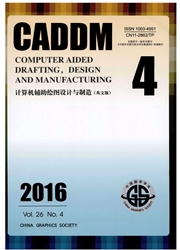

 中文摘要:
中文摘要:
Scene graph is a infrastructure of the virtual reality system to organize the virtual scene with abstraction, it can provide facility for the rendering engine and should be integrated effectively on demand into a real-time system, where a large quantities of scene objects and resources can be manipulated and managed with high flexibility and reliability. We present a new scheme of multiple scene graphs to accommodate the features of rendering engine and distributed systems. Based upon that, some other functions, e.g. block query, interactive editing, permission management, instance response, ″redo″ and ″undo″, are implemented to satisfy various requirements. At the same time, our design has compatibility to popular C/S architecture with good concurrent performance. Above all, it is convenient to be used for further development. The results of experiments including responding time demonstrate its good performance.
 英文摘要:
英文摘要:
Scene graph is a infrastructure of the virtual reality system to organize the virtual scene with abstraction, it can provide facility for the rendering engine and should be integrated effectively on demand into a real-time system, where a large quantities of scene objects and resources can be manipulated and managed with high flexibility and reliability. We present a new scheme of multiple scene graphs to accommodate the features of rendering engine and distributed systems. Based upon that, some other functions, e.g. block query, interactive editing, permission management, instance response, "redo" and "undo", are implemented to satisfy various requirements. At the same time, our design has compatibility to popular C/S architecture with good concurrent performance. Above all, it is convenient to be used for further development. The results of experiments including responding time demonstrate its good performance.
 同期刊论文项目
同期刊论文项目
 同项目期刊论文
同项目期刊论文
 期刊信息
期刊信息
